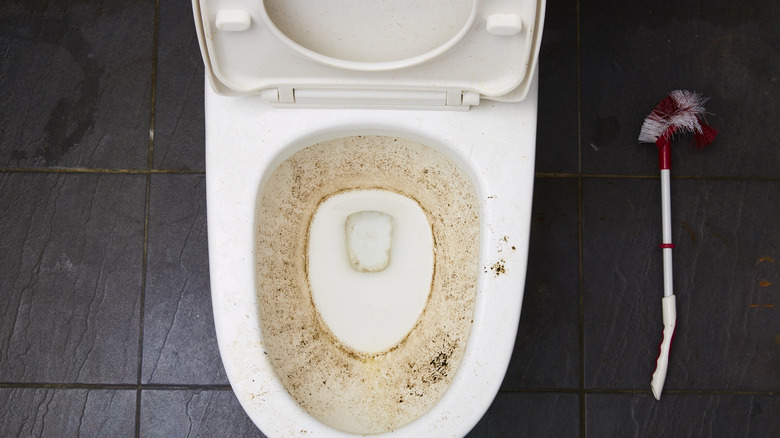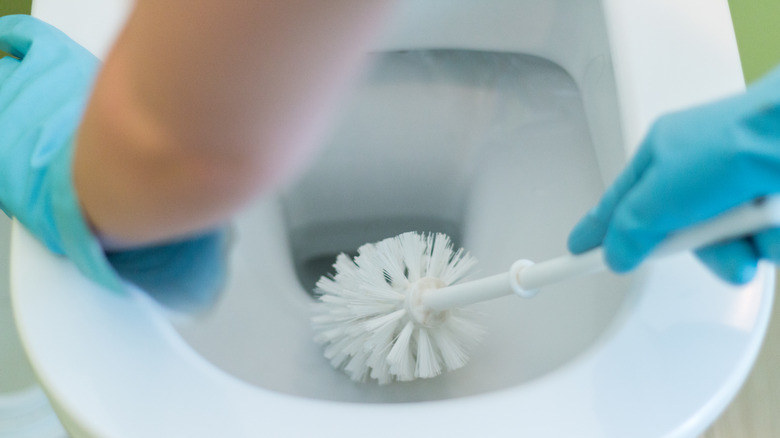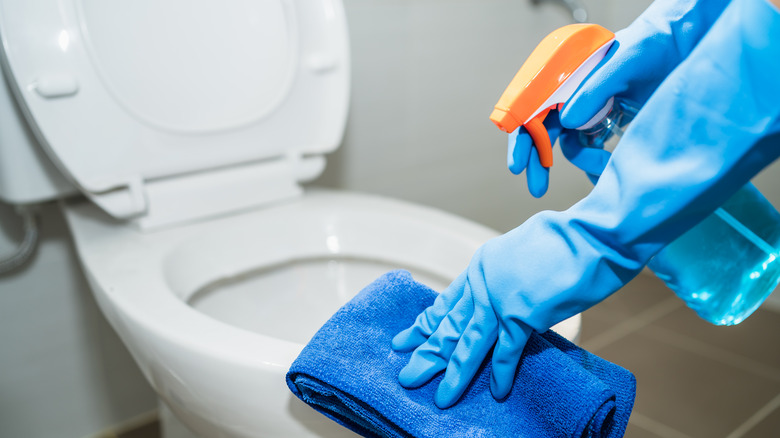What To Do If You Find Dangerous Black Mold Growing In Your Toilet
If you notice black mold growing in your toilet, it's important to act fast. You can remove it by using household products like hydrogen peroxide, vinegar, and baking soda. These readily-available items are surprisingly effective. Hydrogen peroxide acts as a sterilizing agent, while vinegar is known for its acetic acid content. Baking soda, on the other hand, is effective due to its abrasive nature. However, before diving into the specifics of mold removal, it's crucial to understand the nature of the problem you're dealing with, as well as the conditions that encourage mold growth. All this can help with its elimination and prevention.
Black mold, known scientifically as Stachybotrys chartarum, thrives in damp environments, and your toilet provides an ideal breeding ground. The relationship between moisture, humidity, and mold growth is extensively documented in scientific literature. According to the U.S. Environmental Protection Agency (EPA), mold growth can start within 48 hours on damp surfaces. The mold itself is particularly concerning due to the toxic compounds it produces. Prolonged exposure can lead to respiratory issues, allergies, and other health problems. Therefore, it's crucial to address mold growth immediately. That being said, before you remove the mold, safety should be your priority. You'll have to wear protective gear. This includes gloves, goggles, and a mask to prevent contact with mold spores and exposure to cleaning chemicals. These precautions are vital for your safety during the cleaning process.
How to kill mold in the toilet
Hydrogen peroxide is an effective weapon against mold due to its antifungal and antiviral properties. To use it, you'll need the 3% hydrogen peroxide solution, according to Healthline. This concentration is readily available in most stores and is strong enough to tackle mold, but gentle enough for safe use. Pour the solution into the toilet — 1 cup should be enough. You then need to let it sit for about 15 minutes. After it has had time to work, take a brush and scrub the toilet bowl to remove any remaining mold residue. This physical removal is an important step in ensuring you eradicate all traces of mold. Once you've scrubbed the area, flush the toilet to rinse everything away.
In addition to hydrogen peroxide, consider using other natural cleaning solutions, like vinegar. For application, you can pour 1 cup of white vinegar directly into the toilet bowl, as you did with the hydrogen peroxide. In cases of more stubborn mold, combining vinegar with baking soda in the bowl for an hour can be more effective. Baking soda adds an abrasive element to the cleaning process, aiding in the physical removal of the mold. If you find mold in your toilet tank, a slightly different approach is needed. Add a cup of vinegar or bleach inside the tank and scrub.
Understanding why mold appears and how to prevent it
As mentioned earlier, the primary reason for the appearance of black mold in toilets is the high level of humidity and constant moisture. These conditions are ideal for mold spores, which are naturally present in the air, to attach themselves to surfaces and start growing. Bathrooms, with their frequent use and the presence of water, offer the perfect environment for this. In addition to the humidity, poor ventilation contributes significantly to mold growth. Without adequate air circulation to remove moisture, the dampness remains, further encouraging mold development.
Another contributing factor can be infrequent cleaning. If you don't clean your toilet regularly, mold spores can settle and grow. This is particularly true in hard-to-reach areas of the toilet where mold can establish itself unnoticed. Leaks in the bathroom can also lead to mold growth in the toilet bowl. Any unnoticed or unaddressed leaks contribute to the overall moisture levels in the room. These leaks might be small and not immediately obvious, making regular checks important.
Preventative measures against black mold involve addressing these key issues. Clean regularly, especially in the less accessible areas of the bathroom, is essential. Ensure good ventilation, either through exhaust fans or by regularly opening windows. Lastly, fix leaks promptly and effectively.


